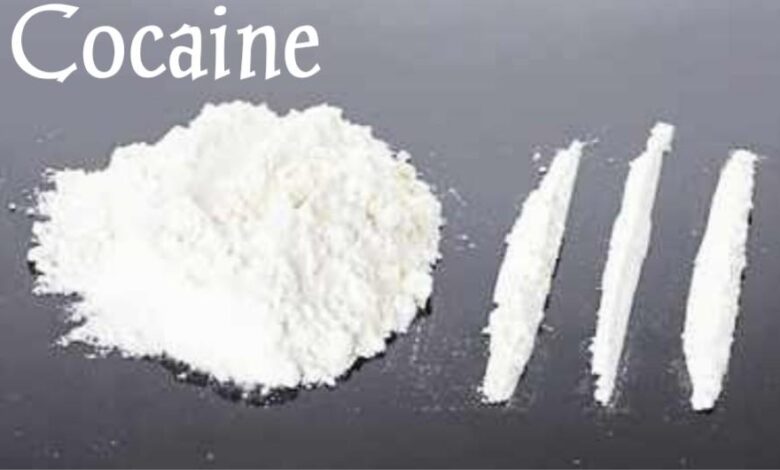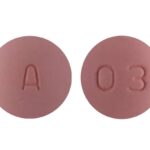Cocaine: How it is made, Effects, Side Effects, Interactions

What is cocaine?
Cocaine is a powerful tropane alkaloid and stimulant drug obtained primarily from the leaves of two coca species native to South America. The use of cocaine spans thousands of years, with a duality of effects noted throughout history. Knowledge of its mind-altering function dates to at least 2000 BC. For centuries, indigenous mineworkers in Andean countries have used cocaine derived from the chewing of coca leaves as an endurance-enhancement agent. Spanish physicians reported the first European use of coca for medicinal purposes in 1596. Cocaine was first isolated in 1860 and was synthesized to be used in manufacturing popular patent medicines, beverages, and “tonics” until the early years of the 20th century.
Although health care providers can use it for valid medical purposes, such as local anesthesia for some surgeries particularly in the eye, ear, nose, and throat. It also has powerful central nervous system effects similar to amphetamines.
In 1961, the coca leaf was listed on Schedule I of the UN Single Convention on Narcotic Drugs together with cocaine and heroin, with a strict control level on medical and scientific use. Today, cocaine is a Schedule II controlled substance, according to the Drug Enforcement Administration (DEA). This means it’s illegal to use cocaine for recreational use in the United States.
As a street drug, cocaine looks like a fine, white, crystal powder. Street dealers often mix it with things like cornstarch, talcum powder, or flour to increase profits. They may also mix it with other drugs such as the stimulant amphetamine, or synthetic opioids, including fentanyl. Adding synthetic opioids to cocaine is especially risky when people using cocaine don’t realize it contains this dangerous additive. Increasing numbers of overdose deaths among cocaine users might be related to this tampered cocaine.
How is cocaine made?
Cocaine making is a complex process, it takes about 450-600 kilograms of fresh coca leaves to create just 1 kilogram of cocaine base, first dried coca leaves are soaked with lime water or other alkaline liquids, and then extracted with kerosene in metal drums. Workers use sulfuric acid to extract the dissolved cocaine and form a liquid solution to which lime is added, leading to the precipitation of coca paste.
Workers then add acid and potassium to remove impurities, followed by bicarbonate, to cause the base to separate. The base is further dissolved in a solvent like acetone and then soaked again in acid. Finally, the cocaine paste is filtered through a cloth to separate, then dried.
The cocaine base can then be converted into a kilogram of cocaine hydrochloride or powdered cocaine.
Powdered cocaine can be further processed into crack by first mixing it into a solution of either ammonia or a combination of baking soda and water, then heating that mixture to create a substance that forms rocks for smoking.
What effect does cocaine have on your body?
According to healthline, cocaine affects everyone differently. Some people report feeling intense euphoria, while others report sensations of anxiety, pain, and hallucinations.
The key ingredient in cocaine, the coca leaf (Erythroxylum coca), is a stimulant that affects the central nervous system (CNS).
When cocaine enters the body, it causes a buildup of dopamine. Dopamine is a neurotransmitter that’s linked to feelings of reward and pleasure.
This buildup of dopamine is central to cocaine’s potential for misuse. Because the body may seek to fulfill the newfound craving for this dopamine reward, the brain’s neurochemistry can be changed, leading to a substance use disorder.
Timelines of the onset of Cocaine Effects
| Route | Onset | Peak Effect (min) | Duration (min) | Half-Life (min) |
| Inhalation | 7 s | 1-5 | 20 | 40-60 |
| Intravenous | 15 s | 3-5 | 20-30 | 40-60 |
| Nasal | 3 min | 15 | 45-90 | 60-90 |
| Oral | 10 min | 60 | 60 | 60-90 |
What happens if you try cocaine once?
Because cocaine affects the CNS, there’s a wide variety of side effects that can result.
Here are some commonly reported side effects after initial use of cocaine:
• bloody nose
• trouble breathing
• abnormal heart rhythms
• chest pain
• dilated pupils
• inability to get or keep an erection
• insomnia
• restlessness or anxiety
• paranoia
• tremors
• dizziness
• muscle spasms
• abdominal pain
• stiffness in the back or spine
• nausea
• diarrhea
• extremely low blood pressure
In rare cases, cocaine may lead to sudden death after its first use. This is often due to cardiac arrest or seizures.
How long does cocaine stay in your system?
How long cocaine stays in your system depends on the quantity taken, your metabolism, and a huge number of other factors. Cocaine and its metabolites for example are generally detectable only for a couple of days after you sniff it, usually 1 to 4 days, but it can be detected for up to a couple of weeks in some people.
How long it hangs around and how long it can be detected by a drug test depends on the factors outlined above.
Here is how long cocaine stays in your system based on typical detection times by test type are:
- Blood: up to 2 days
- Urine: up to 4 days
- Saliva: up to 2 days
- Hair: up to 3 months
What are the side effects of cocaine use?
According to WebMD, people who use cocaine often have more serious side effects and health problems, like:
- Headaches
- Convulsions and seizures
- Heart disease, heart attack, and stroke
- Mood problems
- Sexual trouble
- Lung damage
- HIV or hepatitis if you inject it
- Bowel decay if you swallow it
- Loss of smell, nosebleeds, runny nose, and trouble swallowing, if you snort it
You may have strong cravings for the drug and the high it brings. But the more you use cocaine, the more your brain will adapt to it. You’ll need a stronger dose to feel the same high. This can lead to a dangerous addiction or overdose.
Stronger, more frequent doses can also cause long-term changes in your brain’s chemistry. Your body and mind begin to rely on the drug. This can make it harder for you to think, sleep, and recall things from memory. Your reaction time may be slower. And you’re at risk for more heart, stomach, and lung problems.
What drugs can interact with cocaine?
Several drugs can interact with cocaine and produce side effects which are most times fatal, cocaine use can also trigger drug-drug interaction. Examples of drugs that can interact with cocaine include:
- Alpha-methyldopa (Aldomet)
- Amoxapine (Amoxapine Tablets)
- Amitriptyline (Elavil)
- Clomipramine (Anafranil)
- Citalopram
- Desipramine (Norpramin)
- Desvenlafaxine
- Doxepin (Sinequan)
- Eliglustat
- Idelalisib
- Imipramine (Tofranil)
- Iobenguane I 123
- Isocarboxazid (Marplan)
- Ivacaftor
- Linezolid
- Lorcaserin
- Methylene blue
- Nortriptyline (Pamelor, Aventyl)
- Phenelzine (Nardil)
- Procarbazine
- Protriptyline (Vivactil)
- Reserpine (Serpasil)
- Selegiline (Emsam)
- Tranylcypromine (Parnate)
- Trimipramine (Surmontil)
- Vilazodone
- Vortioxetinef
Studies have also shown concurrent use of alcohol and cocaine is associated with increased mortality and morbidity from cardiovascular complications, hepatotoxicity, and behaviors leading to personal injury. In 74% of cocaine-related fatalities in the United States, another drug, usually ethanol, had been co-ingested. The addition of alcohol to cocaine increases the risk of sudden death 25-fold.





